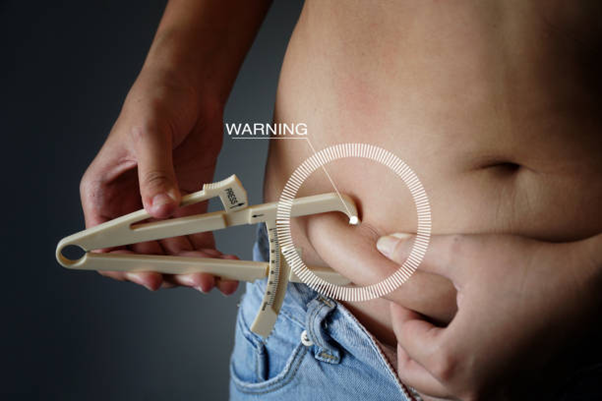Stubborn areas of fat accumulation are a common concern for many individuals striving for a healthier body composition. These regions, often resistant to diet and exercise, can vary significantly from person to person.
Commonly identified stubborn areas include the abdomen, thighs, hips, and upper arms. Stubborn fat in these areas can be really discouraging. It’s easy to feel defeated. The reasons behind these persistent issues are crucial to solving them.
Effective strategies come from understanding the “why” behind the problem. For example, if a factory keeps having machine breakdowns, investigating the cause – worn parts, lack of maintenance, operator error – will lead to better solutions than simply replacing machines.
Your genes, hormones, and lifestyle all play a role in where your body decides to store fat, and this is often where we see that stubborn fat. Recent research shows that individuals with a higher percentage of body fat may find that their bodies store excess fat in specific areas more than others.individuals with a higher percentage of body fat may find that their bodies store excess fat in specific areas more than others.
This localized fat storage can be particularly pronounced in women, who often experience fat accumulation in the hips and thighs due to hormonal influences. Conversely, men may notice more pronounced fat deposits in the abdominal region. Recognizing these patterns is the first step toward understanding how to effectively target and reduce stubborn fat.
Weight gain and hormones: They’re linked.
Body weight and fat distribution? Hormones control that. Your appetite, metabolism, and fat storage are all influenced by them. For example, insulin is a hormone that helps regulate blood sugar levels but can also promote fat storage when present in excess.
High levels of insulin, often resulting from a diet high in refined carbohydrates and sugars, can lead to increased fat accumulation, particularly in the abdominal area. Insulin resistance happens when your cells ignore insulin. This leads to weight gain because your body can’t use sugar efficiently.
Weight management is affected by cortisol, which is better known as the stress hormone. When your body produces too much cortisol, you might find yourself hungry for sweets and greasy foods – the high-calorie kind. Chronic stress can result in a cycle where individuals overeat as a coping mechanism, further exacerbating weight gain in stubborn areas.
Body composition and fat distribution are largely shaped by hormonal balance, which influences how and where the body stores fat. Major hormonal shifts—such as those during puberty, pregnancy, and menopause—can significantly alter fat distribution and metabolism. For example, estrogen promotes fat storage in the hips and thighs, while cortisol can lead to stubborn abdominal fat.
Since different body types react uniquely to hormonal fluctuations, understanding these influences is crucial for developing effective weight loss strategies. By optimizing hormone function through diet, exercise, and lifestyle adjustments, individuals can support healthier metabolism and more sustainable fat loss.
Genetics and Weight Distribution
Genetics plays a significant role in determining an individual’s body shape and where they store fat. Genetic makeup impacts weight in two ways: overall body weight and the location of fat storage. For example, some people might carry weight primarily around their midsection, while others store fat more evenly throughout their body.
This is partly due to inherited traits. For instance, some individuals may have a genetic tendency to store more fat in their lower bodies (a pear-shaped body), while others may accumulate fat around their midsection (an apple-shaped body).
Your genes might make some parts of your body stubborn when it comes to losing weight. Turns out, some genes influence how much weight we gain and where we store fat. It’s all in our DNA! For example, variations in the FTO gene have been linked to increased body mass index (BMI) and a higher likelihood of obesity.
This genetic predisposition can affect metabolic rates and how efficiently the body burns calories. Genetic information is fixed, but using that information is useful. Understanding your genetics can help you make better choices when designing your weight loss program, improving its success rate.
This might mean choosing a diet rich in foods that support your metabolism, or a workout regimen designed for your body type. Knowing this lets people concentrate on their own progress, not on others’ different genetic makeups.
Stress plays a big part.
It’s a fact: stress affects almost everyone, and it’s a major obstacle for people trying to control their weight. Physical health suffers. When faced with stressors, the body enters a state of heightened alertness known as the “fight or flight” response.
Facing a perceived threat? Your body reacts by pumping out stress hormones—cortisol and adrenaline—to help you deal with it. Long-term stress is bad news for your health; it can even make you gain weight. Chronic stress changes how we eat. It often leads people to comfort eat foods packed with sugar and fat.
Food can be a comfort during hard times; this is what we mean by “emotional eating.” Stress messes with how your body uses energy, so losing weight gets harder. Stubborn fat, like that on your stomach and legs, can increase when you eat too much and your body doesn’t burn calories efficiently.
Weight gain and sleep are connected.
Weight and health depend a lot on how much sleep you get. Studies show a clear connection: lack of sleep and weight gain often go hand in hand. When individuals do not get enough restorative sleep, it can lead to hormonal imbalances that affect appetite regulation.
For instance, lack of sleep has been associated with increased levels of ghrelin (the hunger hormone) and decreased levels of leptin (the satiety hormone). You’ll feel hungry more often and want unhealthy snacks when your body’s not in balance.
Missing sleep messes with your brainpower and ability to make good choices. This makes it harder to eat right and exercise. Lack of sleep and low motivation often go hand-in-hand. This frequently results in people choosing to be less active, leading to a sedentary life.
Stubborn fat and extra pounds? It’s a result of several things working together over time. Sleep well to feel good and maintain a healthy weight. It’s that simple!
Conquering those persistent trouble zones; it’s a challenge, but we can do it!
You’ll need to change what you eat, how you work out, and your overall lifestyle to lose those stubborn fat pockets. One effective strategy is adopting a balanced diet rich in whole foods while minimizing processed foods high in sugars and unhealthy fats.
Incorporating plenty of fruits, vegetables, lean proteins, and whole grains can help regulate hormones related to appetite and metabolism. Staying hydrated is key; enough water keeps your metabolism humming and helps curb those hunger pangs.
Strength training helps blast away stubborn fat—it’s a powerful addition to any exercise plan. Resistance training not only builds muscle but also increases resting metabolic rate, allowing the body to burn more calories even at rest.
To lose fat and build muscle definition, focus on exercises that work lots of muscles at the same time. Think squats, deadlifts, and bench presses. Mindfulness practices like yoga or meditation may lessen the negative effects stress has on your weight. Relaxation and emotional wellness improve as you adopt healthier eating habits.
A regular sleep schedule and a comfy bedroom really help you sleep better. Hormones, your genes, how stressed you are, how well you sleep, and your lifestyle—understanding how these things affect each other is key to losing stubborn fat. Diet, exercise, stress reduction, and better sleep—these things work together to help you shed unwanted fat and get healthier.



